About us
Whakamana te Waituna Charitable Trust
In 2018 the Whakamana te Waituna Charitable Trust was formed following years of collaborative work by the farming community, agencies, iwi and others to reduce impacts on Waituna Lagoon/Waipārera.
Members of the Trust include Awarua Rūnanga, Ngāi Tahu, Southland District Council, Environment Southland, Department of Conservation and Fonterra.
Together, the Trust partners were able to secure $13.3 million of funding through partner contributions and the Ministry for the Environment Freshwater Improvement Fund (FIF), to complete a significant five-year programme of work to restore the mana of Waituna Lagoon and wetlands. This included:
- Purchase and retirement of 584 hectares of farmland to create a buffer around Waituna lagoon, with 403 hectares returned to Awarua Rūnanga to establish a mahinga kai pā
- Trialling a range of tools to reduce contaminants reaching the lagoon
- Completing a significant demonstration on Waituna Creek to reduce erosion and improve the quality of instream habitat for native freshwater fish.
The Trust is continuing to build on this work to improve the health and wellbeing of Waituna Lagoon, its catchment and community, for the use and enjoyment of present and future generations.
The Trustees are:
- Cr Nicol Horrell - Environment Southland (Co-Chair)
- Gail Thompson - Te Rūnanga o Awarua (Co-Chair)
- Cr Julie Keast - Southland District Council
- Dean Whaanga - Te Rūnanga o Awarua
- Robb Stevens - Fonterra
- John McCarroll - Department of Conservation (Advisor)
- Maarten van Rossum - Independent Trustee
A Project Steering Group (Sue Corby, Ngāi Tahu; Nick Perham, Environment Southland; Cain Duncan (Chair), Fonterra; Pat Hoffmann, Department of Conservation) supports the work of the Trust, and Workstream Leads report to the Project Steering Group. A Project Office runs the administrative matters for the Trust.

Vision
The Trust has a long-term vision and intergenerational aspirations. The vision for Waituna is:
Mana oranga: Mana Tangata: Mana ki uta: Mana ki tai: Mana Waituna
Ensuring the wellbeing of the people, the land, the waters, the ecosystems and the life-force of the Waituna catchment and lagoon, now and for future generations through a partnership approach.
To address key issues affecting water quality and biodiversity loss in the catchment, and to support productive land uses to continue to be profitable, the key outcome areas for the mahi/work of the Trust include:
- Land repurposing & wetlands – create large scale wetlands in the mid and lower catchment
- Waterway redesign - drains and waterways are redesigned to minimise the risk of sediment flowing into Waituna Lagoon and to reduce weed growth
- Reduce Nitrogen & Phosphorus losses from farming - prevent further increases in N and P losses to water from farmed land and start reducing losses by implementing Low and Medium On-Farm Mitigations
- Mātauranga Māori & iwi reconnection - continue to partner with Awarua Rūnanga and Ngāi Tahu and incorporate Mātauranga Māori into our ways of thinking and working
- Carbon sequestration - realise the co-benefits enhancing biodiversity and water quality have on Aotearoa New Zealand’s carbon footprint and the value of carbon in funding nature restoration.
Based on a commissioned study, to achieve these outcomes the Trust has a long-term goal that 10%, or 2000 hectares, of the Waituna catchment is restored to lowland / wetland habitats and to support contaminant reduction activities.
